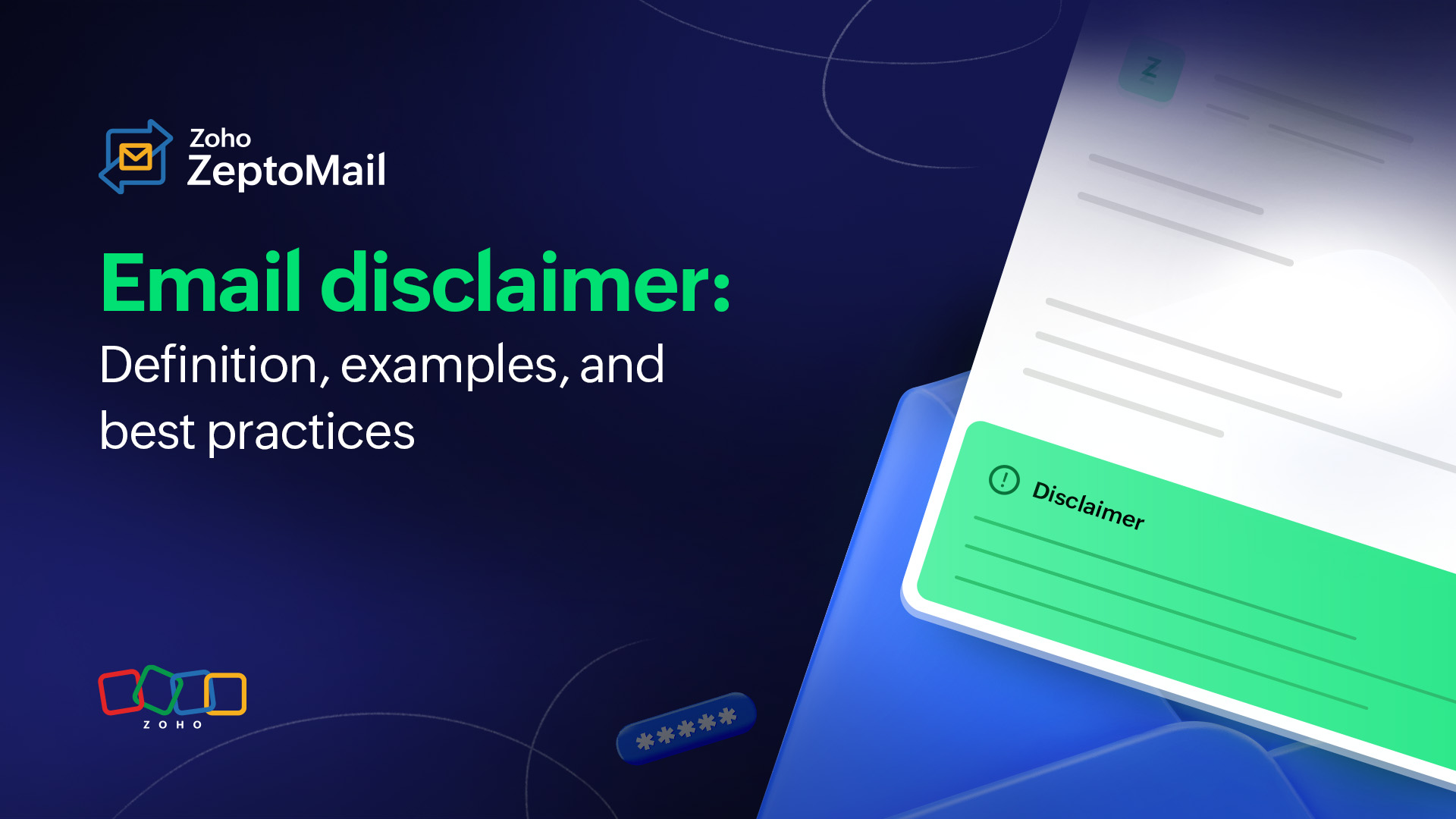- HOME
- More
- Best Practices
- Email tracking best practices
Email tracking best practices
- Published : January 18, 2024
- Last Updated : November 17, 2025
- 1.4K Views
- 4 Min Read
What is email tracking?
Email sent from your business to your customers is one of the most critical channels of communication. It helps nurture customer relations while conveying important information to them. Understanding how these emails work will ensure that your customers have a great experience with your business.
Email tracking can be used to gather insights into how an email was received and how the recipient interacted with it. It provides you with data that can help you take corrective measures when needed. These insights can be broadly classified into two categories.
First, we get insights from the recipient server. An email can be accepted, bounced, or marked as spam. Understanding how recipient servers handle or perceive your email can give you an idea about your sender reputation.
The second category is the insights you gather about how the recipient interacts with the email. These include open rates, click tracking, device tracking, and more. That information will tell you how you can do better, and this is where email tracking comes in handy.
How does email tracking work?
In most cases, a tracking element is embedded into the email to help capture user interactions like opens and clicks. The most common practices for email tracking are discussed below.
Pixel tracking
A pixel is a 1 x 1 image embedded into the email. The image is often transparent and not apparent to the recipient. It’s commonly placed in the header or footer of the email. When this pixel is loaded on opening the email, it captures the open activity along with other important data points. This data is relayed to your ESP, which displays the statistics in its interface.
Link tracking
While pixel tracking can reveal information related to opens and other access points, link tracking is used to gather insights about the click-through rate. This data comes from users who have clicked on the links in the email. This gives you an idea of how many users found the content relevant and followed through to the next step. Link tracking is done by adding a tracking parameter to the embedded link that relays the click data to the ESP.
Email tracking in transactional emails
When we talk about email tracking, more often than not it’s referring to marketing and promotional emails, and most of the information around email tracking is in this context. But one of the most important types of emails sent by a business is the one that’s often taken for granted—transactional email.
Tracking transactional emails is not talked about nearly as much as tracking marketing emails, simply because marketing emails are viewed as revenue activities, and transactional emails are often viewed as operational activities.
While it’s true that transactional emails don’t directly convert to revenue, getting their delivery wrong can still have a negative impact on your business and brand image. Transactional emails are important emails that your customers expect to receive. Getting their delivery right helps build a good customer experience.
When you track your transactional emails, you can gather these data points to gain insights about your delivery:
Sent emails
Delivered emails
Bounced emails
Delivery speed
Open rates
Click-through rates
Device tracking
OS tracking
Browser tracking
Email client tracking
These data points can help you see how your email is being received and help you take corrective measures if needed. Take a look at this blog post for in-depth information about this tracking data and how you can rectify undesirable results.
You can use transactional email services like Zoho ZeptoMail that provide in-depth analytics into every email sent and delivery statistics.
Importance of tracking in transactional emails
Improve deliverability
Insights from open rates and bounces can help you improve deliverability and deliver your emails faster. This can garner trust among your customers for your brand.
Design better emails
Data about the devices, OS, clients, and browsers used to access the emails can help you with designing and optimizing the email for your users.
Retain customers
Getting the email delivery right and improving its performance can help provide a good customer experience. A happy customer is a loyal customer.
Convey information
Transactional emails are sent with the intention of delivering important information to the recipients. Tracking the delivery and activity of these emails will help your business keep the lines of communication open and ensure that the information has reached the user.
Email tracking best practices
Disclose the tracking policy
Email tracking is a great way to stay informed about your email performance, but it must be executed responsibly. It’s best to educate and set some ground rules regarding email tracking policies among your team. It’s also best to declare the use of email tracking in your company's privacy policy so that users are making an informed decision before you start using it.
Ensure compliance
Depending on where your users are, each geographical region comes with its own set of compliance and regulation protocols. Ensure that your email tracking practices are compliant with these regulations.
Use a custom tracking domain
A shared tracking domain can sometimes expose your sender reputation to degradation. Using a custom tracking domain can help you keep clean tracking records and preserve your sender reputation.
Collect useful data
Simply enabling email tracking isn't enough. You need to make sure that it captures all of the important data points that could help you improve your email performance.
Regular monitoring
While email tracking captures important information, regularly checking this data and keeping an eye out for undesirable data is crucial. Immediate attention will help minimize the impact on your business.
Take corrective measures
Gathering data without making inferences is a half measure in improving your email performance. Each data point can give you different insights about your email performance. Deriving insights and taking corrective measures swiftly can help you make the best use of email tracking.
Wrapping up
Sender reputation and email performance are the primary priorities for businesses to get the transactional email delivery right. Email tracking is a great tool to stay informed about email performance by gathering different data points like opens and clicks. The first step to using this tool is to choose a good email provider that provides you with tools for email tracking. Zoho ZeptoMail is one such provider that has transactional email delivery as its sole focus and comes with email tracking tools to optimize delivery.


